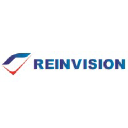
UI/UX Designer
Reinvision Labs
Job Summary
UI/UX designers in the AR/VR industry are crucial for creating intuitive, immersive, and user-centered interfaces and experiences. They conduct user research, design UIs, and ensure seamless UX in AR/VR environments. Responsibilities include spatial design, 3D interaction, prototyping, iterative design, and collaboration with cross-functional teams to optimize AR/VR applications for performance and user engagement.
Must Have
- Conduct user research and persona development.
- Design intuitive and visually appealing user interfaces for AR/VR applications.
- Design seamless and immersive user experiences in AR/VR environments.
- Design spatial UI elements, controls, and navigation systems for VR.
- Develop interactive prototypes and conduct usability testing.
- Collaborate with developers, 3D artists, animators, and business analysts.
- Optimize UI/UX designs for performance and compatibility across AR/VR platforms.
Job Description
UI/UX designers play a crucial role in the AR/VR industry by focusing on creating intuitive, immersive, and user-centered interfaces and experiences that leverage the unique capabilities of augmented reality (AR) and virtual reality (VR) technologies. Here are the key skills and roles of UI/UX designers in the AR/VR industry:
Roles of UI/UX Designers in the AR/VR Industry:
- User Research and Persona Development:
- Conducting user research to understand the behaviors, needs, and preferences of AR/VR users.
- Creating user personas and scenarios to inform design decisions and user interface (UI) optimizations.
- User Interface (UI) Design:
- Designing intuitive and visually appealing user interfaces for AR/VR applications and experiences.
- Creating wireframes, mockups, and prototypes that outline the structure and interaction flow of AR/VR interfaces.
- User Experience (UX) Design:
- Designing seamless and immersive user experiences that enhance user engagement and interaction in AR/VR environments.
- Ensuring usability, accessibility, and efficiency of AR/VR interactions through thoughtful UX design principles.
- Spatial Design and 3D Interaction:
- Designing spatial UI elements, controls, and navigation systems that leverage 3D space in VR environments.
- Creating interactive gestures, haptic feedback, and audio cues that enhance user interaction and immersion in AR/VR.
- Prototyping and Iterative Design:
- Developing interactive prototypes and conducting usability testing to gather feedback and validate design concepts.
- Iterating on designs based on user feedback, technical feasibility, and project requirements in AR/VR development.
- Collaboration with Cross-Functional Teams:
- Collaborating with developers, 3D artists, animators, and business analysts to integrate UI/UX designs into AR/VR applications.
- Communicating design concepts, user flows, and interaction patterns effectively to ensure alignment with project goals.
- UI/UX Optimization and Performance:
- Optimizing UI/UX designs for performance, responsiveness, and compatibility across different AR/VR platforms and devices.
- Conducting A/B testing and analytics to measure user engagement, usability metrics, and improve AR/VR experiences over time.